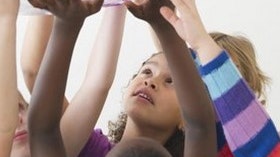Homepage
•
Learning Library
•
Blog
•
Cultural connections: Students gain real-life insights with global PBL
Expand breadcrumbs
Expand breadcrumbs
- Learning Library
- Blog
- Cultural connections: Students gain real-life insights with global PBL
- Homepage
- •
- Learning Library
- •
- Blog
- •
- Cultural connections: Students gain real-life insights with global PBL
Cultural connections: Students gain real-life insights with global PBL
By Tim Douglas
July 13, 2015








